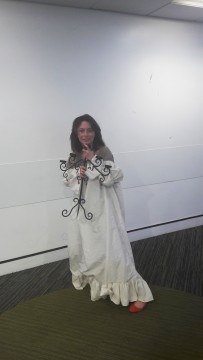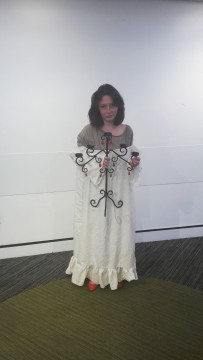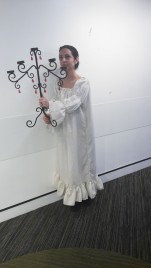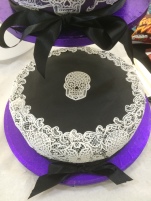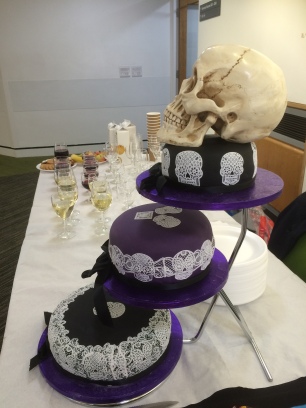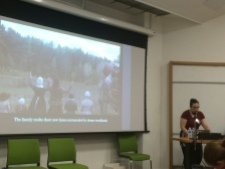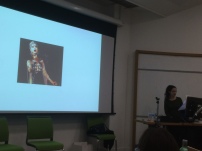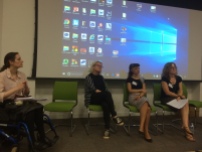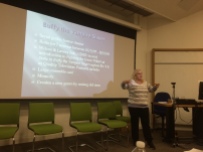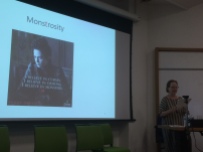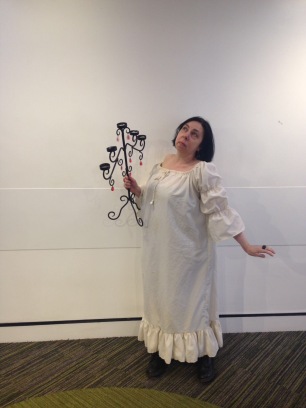EDIT: Please note that submission for the proposal stage of the book has now closed. Alison will be in touch again in 2018 with another CFP for specific areas – so watch this space!
We are back after the summer and are thrilled to share an exciting opportunity to contribute to a new edited collection entitled: Women Make Horror: Filmmaking, Feminism, Genre, edited by Alison Peirse. The collection will be proposed for publication with Palgrave and potential contributors should get in touch with Alison by the 20th October 2017. You can find out more information below and here: Women Make Horror Edited Collection Overview. For further information or to suggest a chapter, please contact Alison here: alison.peirse@york.ac.uk
Women Make Horror: Filmmaking, Feminism, Genre
Edited Collection, Proposal to Palgrave October 2017
Edited by Alison Peirse
Overview
In the past five years, there has been a significant global breakthrough of women directors, screenwriters and producers working in the horror genre. Films such as The Babadook (2014, Jennifer Kent), A Girl Walks Home Alone at Night (2014, Ana Lily Amirpour) and Évolution (2015, Lucile Hadžihalilović) interrogate taken-for-granted assumptions about genre, feminism and gender. As a result, film festivals are changing. Major genre festivals such as Dead by Dawn (Glasgow) and Brussels International Fantastic Film Festival are now screening women-made films, including screenwriter Sarah Daly’s The Unkindness of Ravens (2016, Lawrie Brewster). New women-only horror festivals such as Atlanta’s Women in Horror and Tokyo’s Scream Queen FilmFest are springing up to screen the huge range of new shorts and features including Berkshire County (2014, Audrey Cummings) and Slut (2014, Chloe Okuno). These filmmakers then take advantage of the new circuits of distribution. As well as theatrical and DVD / Blu-ray releases, they are streamed on Netflix and Amazon Prime, as well as specialist horror streaming services Screambox and Shudder.
Films, filmmakers and television shows are also now garnering extensive and international critical interest. Prevenge (2016, Alice Lowe), Raw (2016, Julia Ducournau), XX (2017, Benjamin et al), Egomaniac (2016, Kate Shenton), The Bad Batch (2016, Ana Lily Amirpour) and The Love Witch (2016, Anna Biller) have all been recently profiled in Rolling Stone (2016), the Guardian (2017) and Sight and Sound (2017). Recently, Broadly announced ‘welcome to the golden age of women-directed horror’ (2017). Earlier this month, Drew Barrymore’s production company Flower Films announced the production of Black Rose Anthology, a television horror series created entirely by women.
However, this does not mean that working as a woman practitioner in the genre is now straightforward. Gender inequality remains a huge problem. In 2016, 92% of the top 250 grossing films in the USA were directed by men and 77% had no women writers (Lauzen, 2017: 1). In the past ten years, less than 12% of all UK films have been directed by women (Directors UK, 2016). Horror is the only genre where women have the most screen time and speaking roles (Narayanan et al, 2016), yet are least likely to be employed in behind-the-scenes jobs (Lauzen, 2016: 3). Producer Jennifer Handorf recently commented in Screen Daily, ‘At FrightFest they still only had four films out of seventy from female directors. That’s not bragging rights’. Relatedly, in academia, horror has long been considered a misogynist genre, and much scholarship has identified horror film history as the domain of the male auteur, creating texts based on images of female fear for a presumed male audience and male pleasures. This leads us to the major problem that this project will investigate.
There is a substantial gap in academic thinking about women and horror film and TV, and a significant lack of work on genre in scholarly analyses of women horror practitioners. In academia, we lack any critical or methodological tools to investigate this complex and contradictory state of affairs. In the 1990s, genre scholarship began to tentatively reflect upon the potential pleasures of horror for a female audience (Williams, 1991). There was a brief turn to consider women as real horror film audiences (as opposed to hypothetical spectators) (Cherry, 1999) but this has gained little traction. In academia, women do not make horror films. They are on screen, to be looked-at, or, at best, they are now able to look. Similarly, in existing scholarship on women filmmakers, and in gender inequalities in media industries, horror is almost never discussed. There is a complete absence of engagement with the potential feminist implications of horror films by women, working in a genre that they are told is not for them, and in an industry that discriminates against them (see the Equal Employment Opportunity Commission’s 2017 ruling that major studios systematically discriminate against women directors).
In addition, the research for this proposal has revealed that the above surge in women-made horror is not entirely unprecedented. There is an invisible history of women working in the horror genre since the 1950s. However, it is entirely undiscussed in horror film histories, which are written by male writers about male practitioners. This historical, critical and methodological gap is so obvious, and explicit, it’s now left to the filmmakers themselves to engage with this problem. As writer-director Jovanka Vuckovic explains, ‘XX is a direct response to the lack of opportunities for women in the horror genre in particular… an area where women have been historically misrepresented onscreen and under-represented behind the camera’.
Research Questions
No scholar has yet asked what happens in horror when sense-making is done by women, rather than done to women. This project raises and then answers this question. As a whole, it is underpinned by three interlocking sets of research questions:
1. Cultural perception. Horror is a misogynist genre (Hunt, 1992; Rieser, 2001). How can a woman want to make these films (let alone watch them)? Do the women who make these films consider themselves feminist, or that their films are feminist? Why?
2. The Politics of Storytelling. What kinds of stories are told in these films? How do
they represent women? Are they distinctive from, or similar to, stories told in horror
films made by male teams?
3. The Politics of Authorship. Paraphrasing Annette Kuhn’s Women’s Pictures, a
horror film made by a woman may not be feminist, and men may make feminist horror films. So, what makes a horror film either a) a woman’s film or b) feminist? Is it the attributes of the author, attitudes inherent in the work, or because of the way the film can be read?
The project utilises a variety of methodological approaches, across numerous disciplines, from a range of academics who are at different stages in their careers. It will illuminate the impact of women horror practitioners on a genre long considered to be created by men for male audiences, and canonised as such by male scholars. It charts the contributions of women to the genre since the 1950s, then analyses and contextualises the new wave of women horror filmmakers. It explores not only their understanding of and experience of feminism within an industrial context, but also the key story tropes that emerge in women-made horror film. It develops new interdisciplinary methods and approaches for studying the relationship between filmmaking, feminism and genre. In sum, it will create: a) an alternative feminist history at odds with prevailing academic studies of the horror genre, b) a new, interdisciplinary research area across (at the very least) horror studies, feminist film theory and media industry studies, and c) a set of analytical and methodological tools with which to analyse contemporary working practices in genre filmmaking.
Definitions
1. In terms of filmmaking texts, I am happy to look (way) beyond theatrical, feature length releases, to readily encompass shorts, television plays and series, VoD, streaming services, web series etc. I’m very interested in independent / no / low budget and short productions – this is the arena in which many women are working.
2. I’m also keen to explore cultural frameworks for developing and publicising women practitioners and horror, such as horror film festivals and women-only festivals (e.g. Frightfest, Atlanta’s Women in Horror), women writing about horror film / horror film magazines (e.g. Kat Ellinger / Diabolique), the development of streaming services (e.g. BlackBox Tv Studios), podcasts and vlog creators, funding initatives for women / horror practitioners (e.g. BAFTA Elevate, Warp X’s Darklight)
3. There is no limitation on academic approach. Formal / theoretical analysis is grand, as is media industries, audience and reception studies, exploitation and distribution, specific studios, practitioner interview and contextualisation, analysis of screenplays / production documentation, etc. The wider the range of methodologies across the collection the better. If you have a text that you feel passionate about, and fits with the collection, but don’t feel you have industry ‘data’ or practitioner or archival access to support your approach, that is OK. For example, if you want to look at a film or practitioner in terms of national cinemas, the European avant-garde, the gothic, etc., please do not be put off. An important element of this book will be highlighting the role women played in creating iconic films – and simply discussing this as a fact is important in and of itself. So, even if you can’t get Juliet Snowden to talk to you about writing 2014’s Ouija (!), the fact that you will frame your analysis within the context of the woman’s contribution makes your work valuable to this collection.
Equally, historical overviews of the changing theoretical approaches to women academics studying horror film (e.g. Clover, Creed, Williams, Pinedo) and a consideration of their work in the current filmmaking climate are most welcome.
4. In terms of practitioners, most of this proposal has been written with screenwriters, producers and directors in mind, as this is where my own interests in storytelling lie. However, I am very keen to extend this out to include all above the line roles (e.g. actor) and definitely below-the-line crew (DoP, editor etc).
Initial Indicative List of Potential Films
(but please do feel free to go way beyond this list, and think about telly, web series etc).
1960s – 1970s
• Blood Bath (1966, wr & dir Stephanie Rothman & Jack Hill, Yugoslavia / US, feature)
• The Velvet Vampire (1971, co-wr & dir Stephanie Rothman, USA / Phillipines, feature)
• Halloween (1978, John Carpenter, co-wr & pr Debra Hill, USA, feature)
1980s
• The Fog (1980, John Carpenter, co-wr & co pr Debra Hill, USA, feature)
• The Slumber Party Massacre (1982, Amy Holden-Jones, wr Rita Mae Brown, USA, feature)
• The Sorority House Massacre (1986, Carol Frank, USA, feature)
• Blood Diner (1987, Jackie Kong, USA, feature)
• The Slumber Party Massacre II (1987, dir, wr & co-pr Deborah Brock, USA, feature)
• Near Dark (1987, co-wr & dir Kathryn Bigelow, USA, feature)
• Pet Sematary (1989, Mary Lambert, USA, feature)
• Dance of the Damned (1989, co-wr & dir Katt Shea, USA, feature)
1990s
• The Slumber Party Massacre III (1990, dir Sally Mattison, wr & pr Catherine Cyran, USA, feature)
• Mirror Mirror (1990, Marina Sargenti, wr Annette & Gina Cascone, USA, feature)
• Freddy’s Dead: The Final Nightmare (1991, Rachel Talalay, USA, feature)
• Tale of a Vampire (1992, wr & dir Shimako Sato, UK, feature)
• Organ (1996, wr, dir & cin Kei Fujiwara, Japan, feature)
• Office Killer (1997, Cindy Sherman, USA, feature)
• The Rage: Carrie 2 (1999, Katt Shea, USA, feature)
• Ravenous (1999, Antonia Bird, Czech / UK / USA, feature)
2000s
• American Psycho (2000, co-wr & dir Mary Harron, co-wr Guinevere Turner, USA, feature)
• Ginger Snaps (2000, John Fawcett, wr Karen Walton, pr Karen Lee Hall, Canada, feature)
• Trouble Every Day (2002, co-wr & dir Claire Denis, France / Germany / Japan, feature)
• Ginger Snaps 2: Unleashed (2004, Brett Sullivan, wr Megan Martin, pr Paula Devonshire, Canada, feature)
• Ginger Snaps Back: The Beginning (2004, Grant Harvey, wr Christina Ray, pr Paula Devonshire, Canada, feature)
• Pathogen (2006, wr & dir Emily Hagins, USA, feature)
• The Dead Outside (2008, co-wr & dir Kerry Anne Mullaney, UK, feature)
• Amer (2009, wr & dir Hélène Cattet & Bruno Forzani, France/Belgium, feature)
• The Retelling (2009, wr & dir Emily Hagins, USA, feature)
• Jennifer’s Body (2009, dir Karyn Kusama, wr Diablo Cody, ed. Plummy Tucker, USA, feature)
2010s – (split into features, anthologies, shorts)
Shorts
• Goodnight My Love (2012, Kellee Terell, USA, short)
• Slut (2014, wr & dir Chloe Okuno, USA, short)
• Blame (2014, wr & dir Kellee Terell, USA, short)
• El Gigante (2014, Gigi Saul Guerrero & Luke Bramley, Canada, short)
• The Stylist (2016, Jill Sixx Gevargizian, pr Sarah Sharp, USA, short)
• Nasty (2016, co-wr & dir Prano Bailey-Bond, UK, short)
Or, the brand-new, 2017 #weareweirdos tour, organised by The Final Girls, featuring female-directed horror shorts: The Puppet Man (Jacqueline Castel), Undress Me (Amelia Moses), Pulse ( Becki Pantling), I Should Have Run (Gabriela Staniszewska), Sorry We’re Closed (Alexis Makepeace), A Mother of Monsters (Julia Zanin de Paula), Dead.Tissue.Love (Natasha Austin-Green), Don’t Think of a Pink Elephant (Suraya Raja), Shortcut (Prano Bailey Bond), I Want You Inside Me (Alice Shindelar).
Anthologies
• The ABCs of Death (2012, inc wr & dir Hélène Cattet, USA / NZ, anthology)
• V/H/S (2012, inc. pr Roxanne Benjamin, cin Victoria K. Warren, USA, anthology)
• The ABCs of Death 2 (2014, inc wr & dir Kristina Buožytė; dir Jen & Sylvia Soska; pr Jenn Wexler, multiple countries, anthology)
• Southbound (2015, anthology, wr, dir & pr Roxanne Benjamin; wr Susan Burke, USA anthology)
• Holidays (2016, anthology, inc. wr, dir & ed Sarah Adina Smith, dir Ellen Reid, cin Rebecca Joelson, USA, anthology)
• XX (2017, wr, dir & pr Roxanne Benjamin, wr & dir Karyn Kusama, co-wr & dir Jovanka Vuckovic, co-wr & dir Annie Clarke, Canada / USA, anthology)
Features
• Silent House (2011, Chris Kentis & Laura Lau; pr Laura Lau, France, feature)
• Kill List (2011, Ben Wheatley, co-wr & ed Amy Jump, UK, feature)
• American Mary (2012, wr & dir Jen & Sylvia Soska, Canada, feature)
• Soulmate (2013, wr & dir Axelle Carolyn, UK, feature)
• The Borderlands (2013, Elliot Goldner, pr Jennifer Handorf, UK, feature)
• Carrie (2013, Kimberley Peirce, co-ed Nancy Richardson, USA, feature)
• Ritual (2013, Mickey Keating, pr Chelsea Peter, ed Valerie Krulfeifer, USA, feature)
• Warm Bodies (2013, Jonathan Levine, ed Nancy Richardson, USA / Canada, feature)
• What We Do in the Shadows (2014, Jemaine Clement &Taika Waititi, ed Yana Gorskaya, New Zealand, feature)
• Goodnight Mommy (2014, wr & dir Veronika Franz & Severin Fiala, Austria, feature)
• The Babadook (2014, wr & dir Jennifer Kent, pr Kristina Ceyton, Australia / Canada, feature)
• Honeymoon (2014, co-wr & dir Leigh Janiak, pr Esme Howard, musHeather McIntosh, USA, feature)
• Tormented / Berkshire County (2014, dir & pro Audrey Cummings, Canada, feature)
• A Girl Walks Home Alone at Night (2014, wr & dir Ana Lily Amirpour, USA, feature)
• Inner Demon (2014, wr & dir Ursula Dabrowsky, pr Sue Brown & Julie Byrne, Australia, feature)
• The Lesson (2015, wr & dir Ruth Platt, UK, feature)
• Rage: Midsummer’s Eve (2015, wr, dir & ed Tii Ricks, co-ed Maria Haipus, USA, feature)
• Green Room (2015, Jeremy Saulnier, ed Julie Bloch, USA, feature)
• Évolution (2015, co-wr & dir Lucile Hadžihalilović, pr Ángeles Hernández & Sylvie Pialat, France / Belgium / Spain, feature)
• The Invitation (2015, Karyn Kusama, pr Martha Griffin, ed Plummy Tucker, USA, feature)
• The Unkindness of Ravens (2016, Lawrie Brewster, wr Sarah Daly, UK, feature)
• Egomaniac (2016, wr, dir, pr & ed Kate Shenton, pr Sarah Barker, UK, feature)
• The Bad Batch (2016, wr & dir Ana Lily Amirpour, USA, feature)
• Prevenge (2016, wr & dir Alice Lowe, pr Jennifer Handorf, UK, feature)
• Viral (2016, Henry Joost & Ariel Schulman, wr Barbara Marshall, pr Sheryll Clark, cin Magdalena Górka, USA, feature)
• Blood Hunters (2016, dir & pr Tricia Lee, ed Jane MacRae, Canada, feature)
• Raw (2016, wr & dir Julia Ducournau, France / Belgium / Italy, feature)
• The Neon Demon (2016, Nicolas Winding Refn, co-wr Mary Laws & Polly Stenham, pr Lene Børglum, cin Natasha Braier, Denmark / France / USA, feature)
• The Love Witch (2016, wr, dir, pr, mus & ed Anna Biller, USA, feature)
• Wish Upon (2017, John R. Leonetti, wr Barbara Marshall, pr Sheryll Clark, USA / Canada, feature)
• The Bye Bye Man (2017, Stacy Title, USA / China, feature)
Potential Practitioner Case Studies:
• screenwriter Barbara Marshall
• editor Amy Jump
• director Stephanie Rothman
• writer / director Kei Fujiwara
• producer Jenn Wexler
• director Anna Biller
• producer / director Roxanne Benjamin
• producer / writer Debra Hill
• writer / director Jen & Sylvia Soska (AKA the Twisted Twins)
• writer / director Ana Lily Amirpour
• producer Jennifer Handorf
• editor Plummy Tucker and / or Tucker’s collaboration with director Karyn Kusama.
Potential Film Festival Case Studies:
Scream Queen FilmFest (Japan); Women in Horror (USA), Underwire (UK), Stranger With My Face (Australia), Abertoir (Wales), Frighfest (UK), Dead by Dawn (UK), Etheria Film Night (USA), Sitges (Spain), BIFF – Brussels International Fantastic Film Festival (Belgium), PiFAN – Bucheon Int. Fantastic Film Festival (South Korea), Screamfest (USA)
Provisional Timetable
• January 2018
Proposal accepted by Palgrave, contract sent out
• October 2018
5000 – 7000 word chapters due
• December 2018
Edited chapters returned to authors for final submission
• February 2019
Final submission chapters returned to editor
• Summer 2019
Book submission to Palgrave
• Spring – Summer 2020
Book publication. Champagne and feasting.










